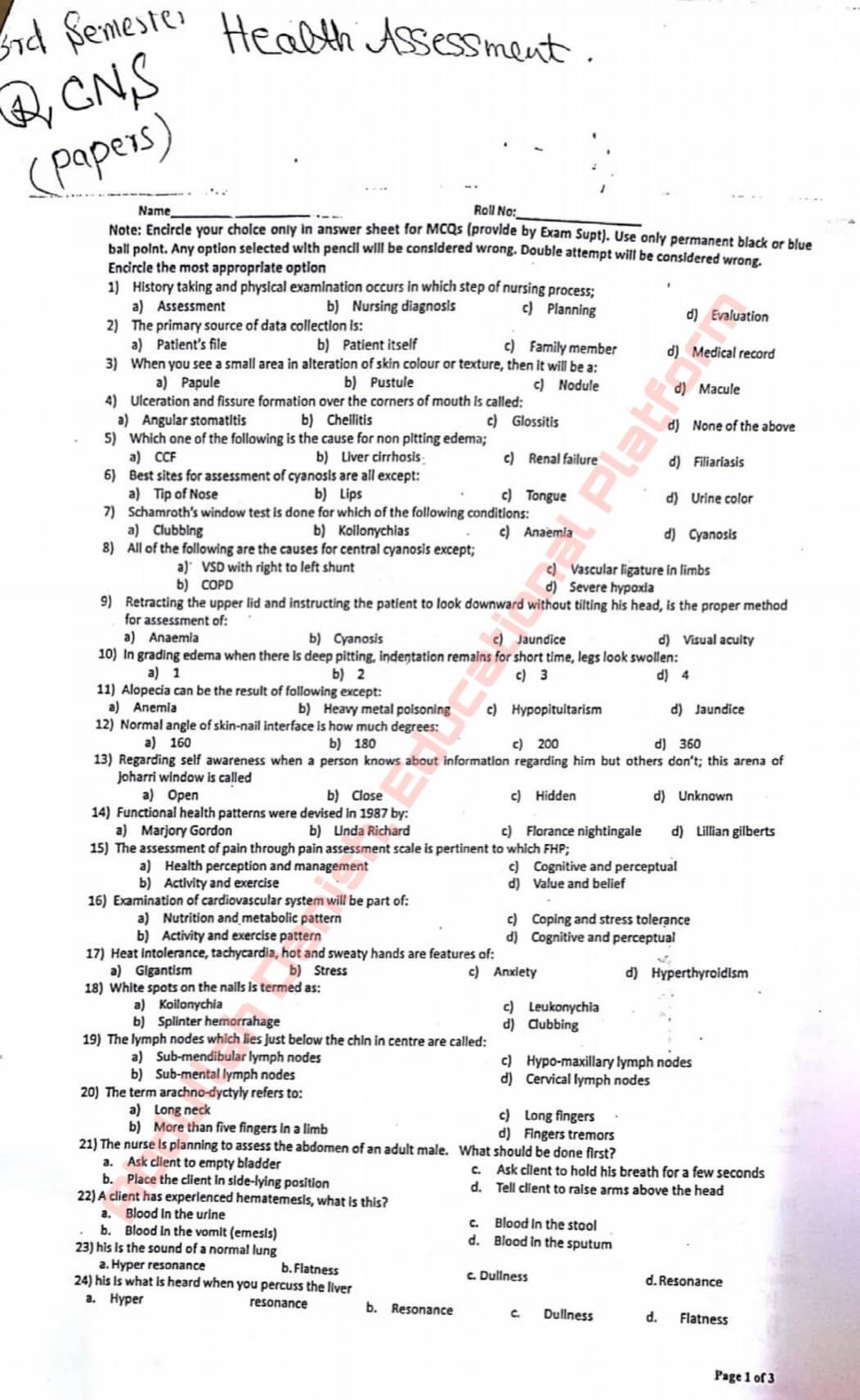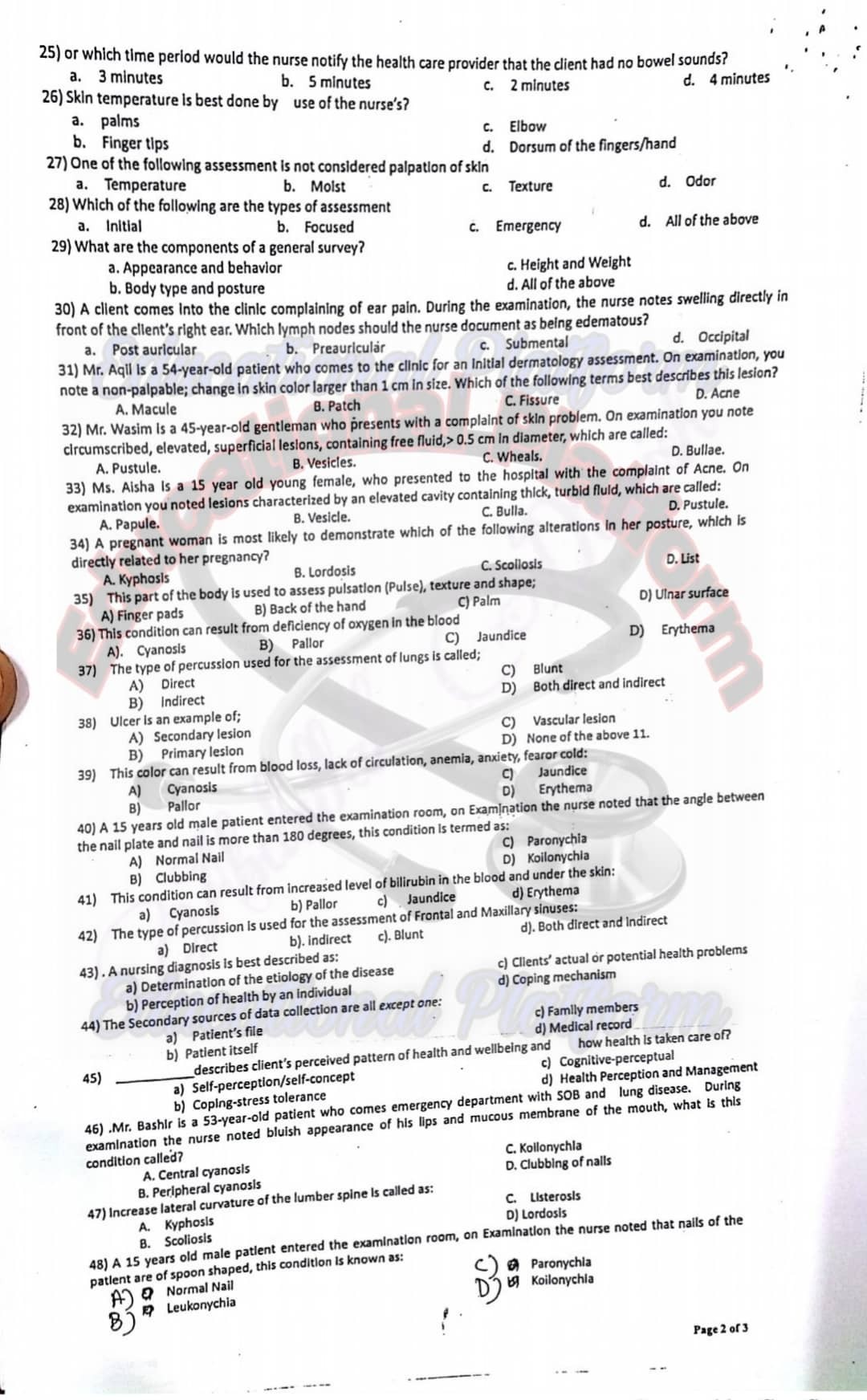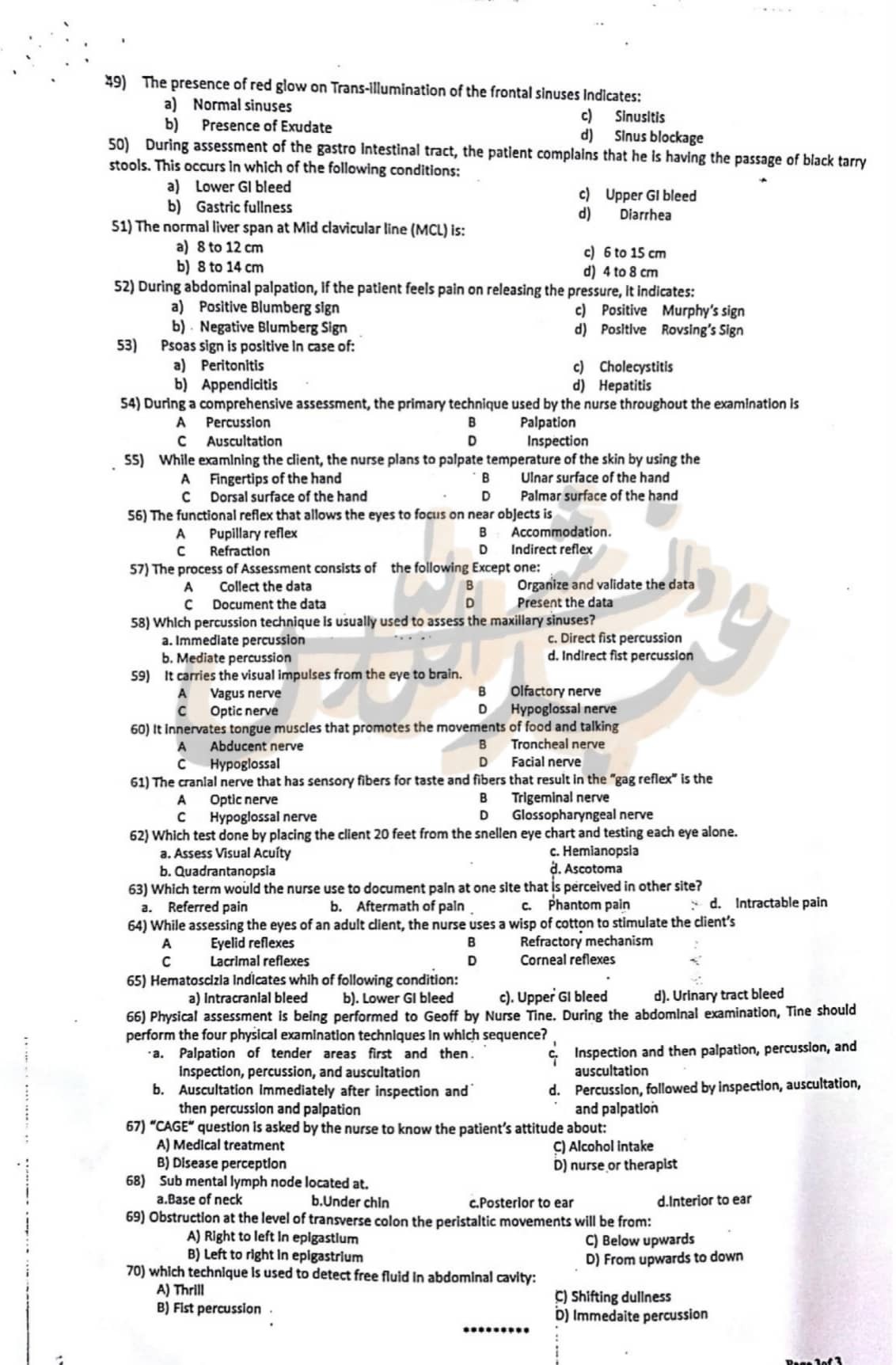- A 50-year-old male presents with a 3-day history of red, itchy eyes. He denies any history of eye injury, contact lens use, or recent travel. Examination reveals conjunctival hyperemia, chemosis, and mild discharge. Which of the following is the most likely diagnosis?
(A) Bacterial conjunctivitis
(B) Viral conjunctivitis
(C) Allergic conjunctivitis
(D) Dry eye syndrome
- A 30-year-old female presents with a 2-day history of blurred vision in her right eye. She also reports eye pain, photophobia, and redness. Examination reveals conjunctival hyperemia, corneal clouding, and a 3 mm hypopyon. Which of the following is the most likely diagnosis?
(A) Bacterial keratitis
(B) Viral keratitis
(C) Fungal keratitis
(D) Herpes simplex keratitis
- A 60-year-old male presents with a 2-year history of progressive vision loss in both eyes. He also reports difficulty seeing in low light and halos around lights. Examination reveals bilateral cataracts. Which of the following is the most likely cause of his vision loss?
(A) Age-related macular degeneration
(B) Diabetic retinopathy
(C) Glaucoma
(D) Cataracts
- A 55-year-old male presents with a 10-year history of type 2 diabetes mellitus. He is well-controlled on oral hypoglycemic agents. Examination reveals bilateral non-proliferative diabetic retinopathy. Which of the following is the most important next step in his care?
(A) Annual eye exams
(B) Laser photocoagulation
(C) Vitrectomy
(D) Systemic corticosteroids
- A 40-year-old female presents with a 2-month history of increasing intraocular pressure (IOP) in her right eye. She also reports halos around lights and difficulty seeing in low light. Examination reveals open angles in her anterior chambers and IOP of 30 mmHg in her right eye. Which of the following is the most likely diagnosis?
(A) Primary open-angle glaucoma
(B) Primary angle-closure glaucoma
(C) Secondary glaucoma
(D) Ocular hypertension
Answers:
- (B) Viral conjunctivitis
- (A) Bacterial keratitis
- (D) Cataracts
- (A) Annual eye exams
- (A) Primary open-angle glaucoma
- A 55-year-old female presents with a 2-year history of progressive vision loss in her right eye. She also reports difficulty seeing in low light and halos around lights. Examination reveals cataracts in her right eye. What is the most likely cause of her vision loss?
(a) Age-related macular degeneration
(b) Diabetic retinopathy
(c) Glaucoma
(d) Cataracts
- A 60-year-old male presents with a 10-year history of type 2 diabetes mellitus. He is well-controlled on oral hypoglycemic agents. Examination reveals non-proliferative diabetic
- in both eyes. What is the most important next step in his care?
(a) Annual eye exams
(b) Laser photocoagulation
(c) Vitrectomy
(d) Systemic corticosteroids
- A 45-year-old female presents with a 2-month history of increasing intraocular pressure (IOP) in her left eye. She also reports halos around lights and difficulty seeing in low light. Examination reveals closed angles in her anterior chambers and IOP of 32 mmHg in her left eye. What is the most likely diagnosis?
(a) Primary open-angle glaucoma
(b) Primary angle-closure glaucoma
(c) Secondary glaucoma
(d) Ocular hypertension
- A 30-year-old male presents with a 2-day history of blurred vision in his left eye. He also reports eye pain, photophobia, and redness. Examination reveals conjunctival hyperemia, corneal clouding, and a 2 mm hypopyon. What is the most likely diagnosis?
(a) Bacterial keratitis
(b) Viral keratitis
(c) Fungal keratitis
(d) Herpes simplex keratitis
- A 50-year-old male presents with a 1-week history of red, itchy eyes. He denies any history of eye injury, contact lens use, or recent travel. Examination reveals bilateral conjunctival hyperemia, chemosis, and mild discharge. What is the most likely diagnosis?
(a) Bacterial conjunctivitis
(b) Viral conjunctivitis
(c) Allergic conjunctivitis
(d) Dry eye syndrome
Answers:
- (d) Cataracts
- (a) Annual eye exams
- (b) Primary angle-closure glaucoma
- (a) Bacterial keratitis
- (c) Allergic conjunctivitis
- Which of the following is the most common cause of vision loss in patients with diabetes?
A. Cataract
B. Diabetic retinopathy
C. Glaucoma
D. Macular edema
2. A 45-year-old patient presents with acute onset of severe eye pain, blurred vision, and halos around lights. Which of the following is the most likely diagnosis?
A. Acute angle-closure glaucoma
B. Corneal abrasion
C. Ocular migraine
D. Retinal detachment
3. What is the first-line treatment for a bacterial corneal ulcer?
A. Topical corticosteroids
B. Oral antibiotics
C. Topical antibiotics
D. Antiviral therapy
4. A 60-year-old patient with cataracts undergoes phacoemulsification. Which intraocular lens (IOL) type would provide the patient with the best near and distance vision without the use of glasses?
A. Monofocal IOL
B. Toric IOL
C. Multifocal IOL
D. Phakic IOL
5. What is the most common cause of irreversible blindness worldwide?
A. Cataract
B. Glaucoma
C. Age-related macular degeneration
D. Diabetic retinopathy
6. Which of the following clinical features is most indicative of a retinal detachment?
A. Painful red eye
B. Sudden onset of floaters and/or flashes
C. Gradual peripheral visual field loss
D. Central vision loss
7. What is the characteristic fundus finding in age-related macular degeneration (AMD)?
A. Optic disc pallor
B. Drusen deposits
C. Flame hemorrhages
D. Cotton wool spots



